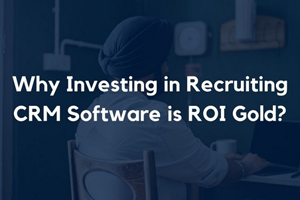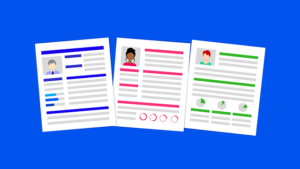 Today’s guest post is from our newest Alliance Partner. JobAdder manages and organizes the recruitment process for anyone who hires people, offering simplicity, mobility and superior support. Learn more about JobAdder and connect with us on Facebook, Twitter and LinkedIn. We’re excited they’ll be part of our upcoming Global Conference!
Today’s guest post is from our newest Alliance Partner. JobAdder manages and organizes the recruitment process for anyone who hires people, offering simplicity, mobility and superior support. Learn more about JobAdder and connect with us on Facebook, Twitter and LinkedIn. We’re excited they’ll be part of our upcoming Global Conference!
Is “top drawer-ing” of resumes, and working straight from your email inbox a way of life for your company? If so, it’s time to consider a cloud based software solution to help power your recruitment process.
Here are just a few reasons to be considering cloud based recruitment software:
Scale easier: Does your agency have growth plans? Cloud based software offers your company the ability to easily add users any time in a few simple clicks. There is no additional software to install and very little training required for new users.
Reduced IT costs: With cloud based software, recruitment related IT costs can be dramatically reduced. It is no longer necessary to have a network, servers, Exchange and expensive IT support contracts. You can also run your business on low spec PCs or Macs as the machine itself is doing so much less than it once might have. Many of our clients, for example, run their businesses with the lowest spec iMac on every desk and no networks, no servers and no desk phones.
Accessibility: Access your recruitment database anywhere, anytime on any device when you make the switch to a cloud based software. There really are no limitations to where you take your business. Flip open a laptop, tablet or mobile device and get recruiting.
A single source of truth: Spreadsheets and Word docs are tedious and allow little visibility into the overall activity of your company. With a cloud based recruitment platform all activity, candidates, resumes, jobs, companies and contacts are in one central location, providing the whole business with a single source of up to date information.
Streamlined Process: One recruiter uses a spreadsheet, the other keeps multiple word documents saved locally to manage their job ads. With cloud recruitment, you can set up company wide email templates, job ad templates, reports — just about anything you want, to streamline recruitment processes for your entire company.
Increased Collaboration: Share candidates with your team, duplicate job ads, split fees — whatever you’d like. By using a recruitment software that’s cloud based, the options for collaboration are endless.
Stay up to date: So long licensing software! With cloud based software, you have peace of mind that your company is staying up to date with the latest trends in recruitment. New product releases simply appear one day when you log in. No more expensive, painful software upgrades — just happy Monday morning surprise when you log in to find new features to help you recruit better.
Has your company found a cloud based software solution? Comment below and tell us how a cloud based software solution has helped your company!
image courtesy of hywards / www.freedigitalphotos.net

 Today’s guest blogger is Ellen M. Steinlauf. She is the CMO of Oorwin, a leading SaaS-based platform for AI-Driven Talent Acquisition & Management and Recruiter Productivity & Effectiveness. Oorwin’s platform is used to manage your entire Talent Intelligence lifecycle. In this post, Ellen discusses how to boost recruiter productivity and effectiveness with a Talent Intelligence Platform.
Today’s guest blogger is Ellen M. Steinlauf. She is the CMO of Oorwin, a leading SaaS-based platform for AI-Driven Talent Acquisition & Management and Recruiter Productivity & Effectiveness. Oorwin’s platform is used to manage your entire Talent Intelligence lifecycle. In this post, Ellen discusses how to boost recruiter productivity and effectiveness with a Talent Intelligence Platform. 





